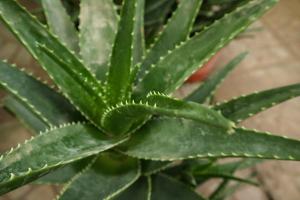What Percentage of Earth's Plant Life is Under Water?
Earth is covered by water, and it is a well-known fact that most of the world's plant life is located on land. However, that does not mean that there is no plant life under water. In fact, there are many different species of plants that grow beneath the surface of oceans, lakes, and rivers. But what percentage of Earth's total plant life is underwater? Let's take a closer look.
Types of Underwater Plants
Underwater plants are also known as aquatic plants, and they can range in size from tiny single-celled organisms to large, complex plant structures. They are divided into several categories based on their habitat, including freshwater plants, saltwater plants, and brackish water plants.
Freshwater plants are found in rivers, lakes, and other freshwater sources. They include water lilies, arrowhead, and duckweed, among others. Saltwater plants, on the other hand, grow in oceans and seas, and they include seaweeds, sea grasses, and kelp forests. Brackish water plants are found in estuaries, where freshwater and saltwater mix.
Percentage of Underwater Plant Life
While it is difficult to estimate the exact percentage of Earth's plant life that is underwater, studies suggest that roughly 15-20% of plant species can be found in aquatic environments. This means that there are thousands of different species of underwater plants, some of which have yet to be discovered.
When it comes to the total biomass of plant life on Earth, the percentage of underwater plant life is even smaller. According to estimates, less than 1% of the total biomass of plant life on Earth is underwater. This is due to the fact that most of the planet's plant life is found on land, where it has access to the sunlight and nutrients it needs to grow and thrive.
Importance of Underwater Plants
Although underwater plants make up a small percentage of Earth's total plant life, they play a vital role in maintaining the health of aquatic ecosystems. They provide food and shelter for a wide range of aquatic animals, including fish, crustaceans, and mollusks. They also help to improve water quality by absorbing excess nutrients and pollutants and producing oxygen through photosynthesis.
Additionally, underwater plants can be used by humans for various purposes. For example, seaweed is a valuable source of food and medicine, while sea grasses can be used for erosion control and to help mitigate the effects of climate change.
Conclusion
While most of Earth's plant life is found on land, there is still a significant amount of plant life that exists beneath the surface of oceans, lakes, and rivers. While it is difficult to determine the exact percentage of plant life that is underwater, studies suggest that it is around 15-20% of all plant species. Although this is a relatively small percentage, underwater plants play a vital role in maintaining the health of aquatic ecosystems and can be used by humans for various purposes.

 how many times do yo...
how many times do yo... how many planted tre...
how many planted tre... how many pine trees ...
how many pine trees ... how many pecan trees...
how many pecan trees... how many plants comp...
how many plants comp... how many plants can ...
how many plants can ... how many plants and ...
how many plants and ... how many pepper plan...
how many pepper plan...
































